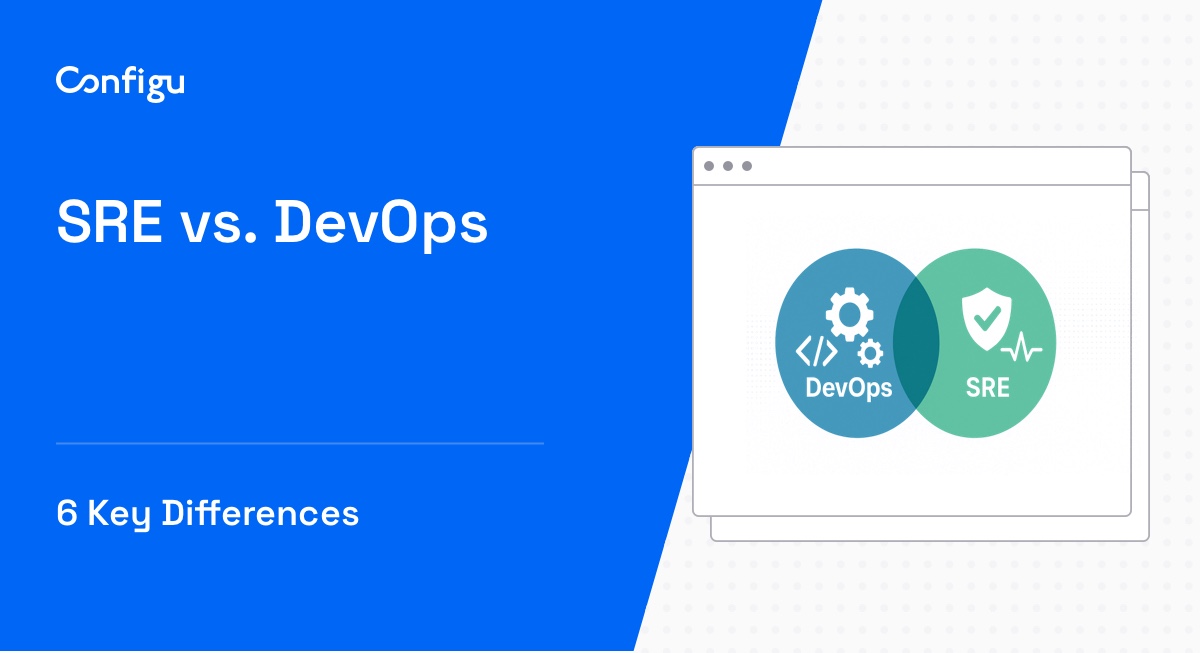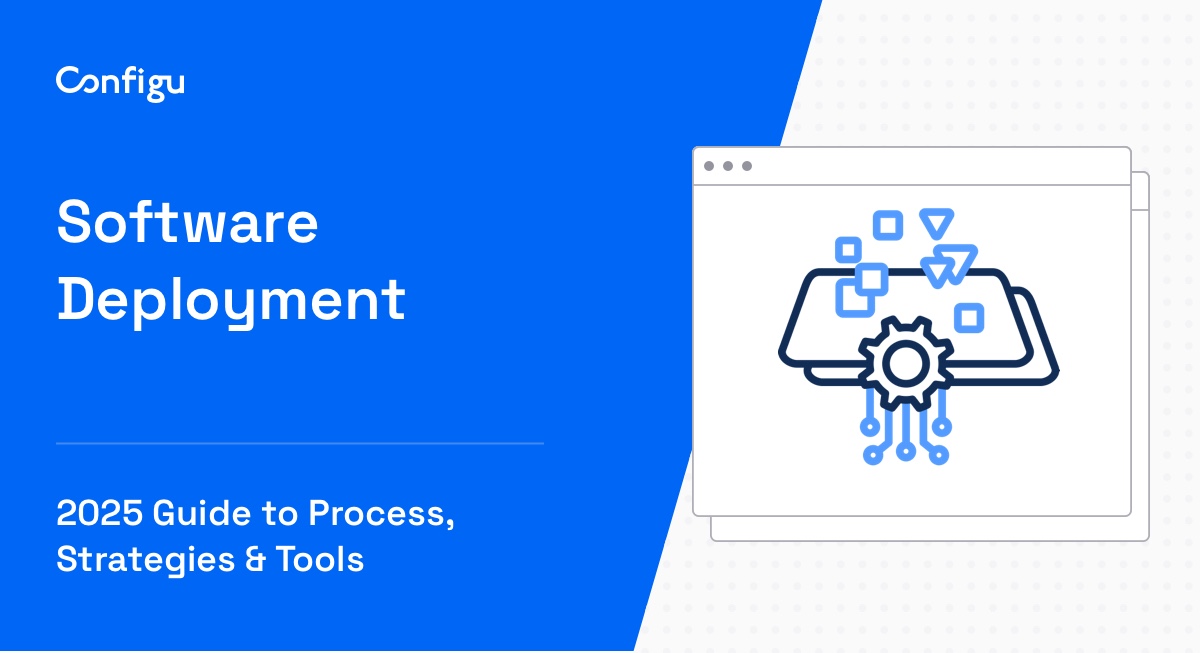What Is GitOps and Why Do You Need GitOps Tools?
GitOps is a methodology that applies version control system’s principles and practices to infrastructure and operational tasks. At its core, GitOps involves using Git (or other source control systems) as the single source of truth for declarative infrastructure and applications. With Git at the center of the CI/CD pipeline, teams can use the same tools and processes for application development and operational tasks, such as deploying to production environments, managing configurations, and updating infrastructure.
The need for GitOps tools arises from the increasing complexity and scalability requirements of modern software development and deployment. These tools automate and streamline the deployment process, ensuring that changes made in the Git repository are reflected in the production environment automatically and reliably. By leveraging GitOps tools, organizations can achieve faster deployment times, improved reliability, consistency across environments, and a more collaborative and transparent workflow.
In this article:
Why Are GitOps Tools Important?
GitOps tools help bridge the gap between development and operations. By treating infrastructure changes as code changes, these tools enable better version control, easier rollbacks, and more predictable deployments. This methodology aligns development and operations, enabling a more effective DevOps process.
GitOps tools can also enhance security and compliance by providing an audit trail for every change in the infrastructure. They automate security checks and compliance policies, ensuring that every deployment meets organizational and regulatory standards. This proactive stance on security and compliance mitigates risks and reduces the workload on operations teams.
Key Features of Gitops Tools
GitOps tools typically offer the following features:
- Single source of truth: GitOps tools use Git repositories as the sole source for defining and storing the entire state of infrastructure and applications, ensuring consistency and traceability.
- Automated deployment: They automate the process of deploying applications and infrastructure changes directly from Git, reducing the potential for human error and speeding up delivery cycles.
- Declarative configuration: These tools rely on declarative configurations, which specify the desired state of the system without defining the steps to achieve that state. This simplifies management and enhances reproducibility.
- Continuous reconciliation: GitOps tools continuously check the actual state of the system against the state defined in Git. Any discrepancies are automatically corrected, ensuring the environment always matches the intended state.
- Rollback and version control: Changes can be easily rolled back to a previous state, and version control provides a detailed history of changes, facilitating better accountability and rollback capabilities.
- Security and compliance: They enforce security policies and compliance checks as part of the deployment process, automatically ensuring that all changes meet the necessary standards before they are applied.
- Enhanced collaboration: By integrating with standard development tools and practices, GitOps tools foster better collaboration between development and operations teams.
- Monitoring and reporting: Many GitOps tools come with built-in monitoring and alerting capabilities, offering real-time insights into system performance and health.
Tips From the Expert
In my experience, here are tips that can help you optimize the use of GitOps tools:
-
Automate security policy enforcement
Use GitOps tools that support policy-as-code frameworks, such as Open Policy Agent (OPA), to automate security checks in your pipelines. This ensures security policies are consistently enforced at each deployment stage without manual intervention. -
Enable drift detection and auto-reconciliation
Leverage continuous reconciliation features in GitOps tools like Argo CD or Werf to detect and correct configuration drift automatically. This ensures that your system state always matches the declared state in Git, reducing the risk of misconfigurations. -
Implement role-based access control (RBAC)
Use RBAC features to limit who can modify or approve changes in the Git repository. Tools like Argo CD and GitLab for GitOps offer fine-grained access controls, ensuring only authorized users can impact production environments. -
Use preview environments for testing
GitOps tools like Jenkins X support preview environments that allow testing changes in isolation before merging to production. Use these to catch issues early in the CI/CD pipeline, improving the quality of deployments. -
Optimize CI/CD pipelines for scalability
For high-frequency deployments, consider GitOps tools that integrate seamlessly with Kubernetes and support scalable CI/CD, such as Codefresh or Jenkins X. These tools can help handle large, complex workflows without manual overhead.
6 Notable GitOps Tools
1. Argo CD
Argo CD is an open-source, declarative GitOps tool designed to automate the deployment of applications to various computing environments. It focuses on Kubernetes to manage and deploy applications, using Git repositories as the source of truth for the definition of applications and their environments.
Argo CD ensures that the state of a Kubernetes cluster matches the configurations stored in Git. Its web UI provides visualization of application activity, enabling tracking of deployments and their status across environments.
Key features and capabilities of Argo CD include its ability to automatically detect and correct drift in application states, ensuring that the deployed applications are synchronized with the Git repository. It supports multiple Git repositories, enabling complex deployments across various environments.
Argo CD integrates with existing CI pipelines, enhancing automation in deployment processes. Its role-based access control (RBAC) supports secure access management, while its health assessment and monitoring tools allow for proactive management of application performance.
Source: ArgoCD
2. Codefresh
Codefresh is a CI/CD platform that incorporates GitOps principles and automates build, test, and deployment pipelines. It is designed to work with Kubernetes, Docker, and Helm, providing a set of features for managing containerized applications.
Codefresh’s GitOps capabilities allow developers to use Git as the single source of truth for their deployment workflows, ensuring consistency and reliability in deployments. Key features and capabilities include Codefresh’s integrated Docker registry and Helm repository, which streamline the management of container images and Helm charts.
Its visual pipeline builder simplifies the creation and maintenance of CI/CD workflows. Codefresh also offers debugging and testing capabilities. It supports varied deployment strategies such as canary releases and blue-green deployments, allowing teams to minimize risks associated with new releases.
Source: Codefresh
3. GitLab for GitOps
GitLab for GitOps leverages the features of GitLab, a DevOps platform, to implement GitOps workflows. It integrates source code management, CI/CD, and monitoring.
GitLab uses an infrastructure as code (IaC) approach to manage and deploy infrastructure and applications using merge requests, providing a streamlined process for reviewing, approving, and deploying changes. It is tightly integrated with Terraform.
Key features and capabilities include GitLab’s CI/CD pipelines, which automate the deployment process, and its built-in monitoring and logging tools, which provide insights into application performance and infrastructure health.
GitLab supports a wide range of programming languages and frameworks. Its issue tracking and collaborative review tools support team collaboration. Additionally, GitLab’s security scanning and compliance features help ensure that deployments are secure.
Source: GitLab
4. Jenkins X
Jenkins X extends the popular Jenkins CI/CD tool with cloud-native development features. It automates CI/CD pipelines for cloud-native applications.
Jenkins X emphasizes the use of Git for version control and collaboration, integrating GitOps workflows to manage production environments through pull requests and automated deployments.
Key features and capabilities include automatic setup of CI/CD pipelines tailored for cloud-native development. It supports preview environments for testing changes in isolation before merging them into the main branch.
Jenkins X integrates with major cloud providers and Kubernetes services, simplifying the deployment and scaling of applications. Its environment promotion model enables changes to be progressively deployed to more critical environments.
Source: Jenkins
5. Werf
Werf is an open-source GitOps tool designed to simplify the process of building and deploying applications using Docker and Kubernetes. It combines the functionality of Git-based workflows with building, publishing, and deploying capabilities.
Werf manages the lifecycle of applications, from development to production, with a focus on automation and reproducibility. Key features and capabilities include its mechanism for building Docker images using Git. It supports incremental rebuilds and image tagging strategies, optimizing the build process.
Werf integrates with Kubernetes for deploying applications, offering tools for monitoring and managing deployments. Its configuration management system allows for dynamic updates of application configurations without the need for manual intervention. Werf’s emphasis on traceability and auditability makes it suitable for teams prioritizing security and compliance.
6. Honorable Mention: Weave GitOps Core
Note: WeaveWorks originally coined the term GitOps and created possibly the first GitOps tool. However, recently the company has shut down, putting the future of the tool in question.
Weave GitOps Core is an open-source tool focused on providing a straightforward GitOps experience, primarily targeting Kubernetes infrastructure and application management. It simplifies the process of adopting GitOps principles, enabling teams to manage their Kubernetes clusters and applications through Git.
Weave GitOps Core emphasizes ease of use and quick setup, aiming to lower the barrier to entry for teams new to GitOps. A key feature is its tight integration with Kubernetes, enabling automatic deployment and management of applications and infrastructure. It offers a simplified setup process, making it easy for teams to start with GitOps.
The tool supports continuous deployment strategies, automatically applying changes from Git to the target environment. Weave GitOps Core also provides visibility into the deployment process and the state of Kubernetes resources, designed to enhance operational transparency.
Source: Weave GitOps Core
Supporting GitOps with Configuration Management
Configu is a configuration management platform that streamlines and automates config management, making it better suited for GitOps processes. You can think of Configu as Git for configurations. It’s comprised of two main components:
Configu Orchestrator
As applications become more dynamic and distributed in microservices architectures, configurations are getting more fragmented. They are saved as raw text that is spread across multiple stores, databases, files, git repositories, and third-party tools (a typical company will have five to ten different stores).
The Configu Orchestrator, which is open-source software, is a powerful standalone tool designed to address this challenge by providing configuration orchestration along with Configuration-as-Code (CaC) approach.
Configu Cloud
Configu Cloud is the most innovative store purpose-built for configurations, including environment variables, secrets, and feature flags. It is built based on the Configu configuration-as-code (CaC) approach and can model configurations and wrap them with unique layers, providing collaboration capabilities, visibility into configuration workflows, and security and compliance standardization.
Unlike legacy tools, which treat configurations as unstructured data or key-value pairs, Configu is leading the way with a Configuration-as-Code approach. By modeling configurations, they are treated as first-class citizens in the developers’ code. This makes our solution more robust and reliable and also enables Configu to provide more capabilities, such as visualization, a testing framework, and security abilities.



